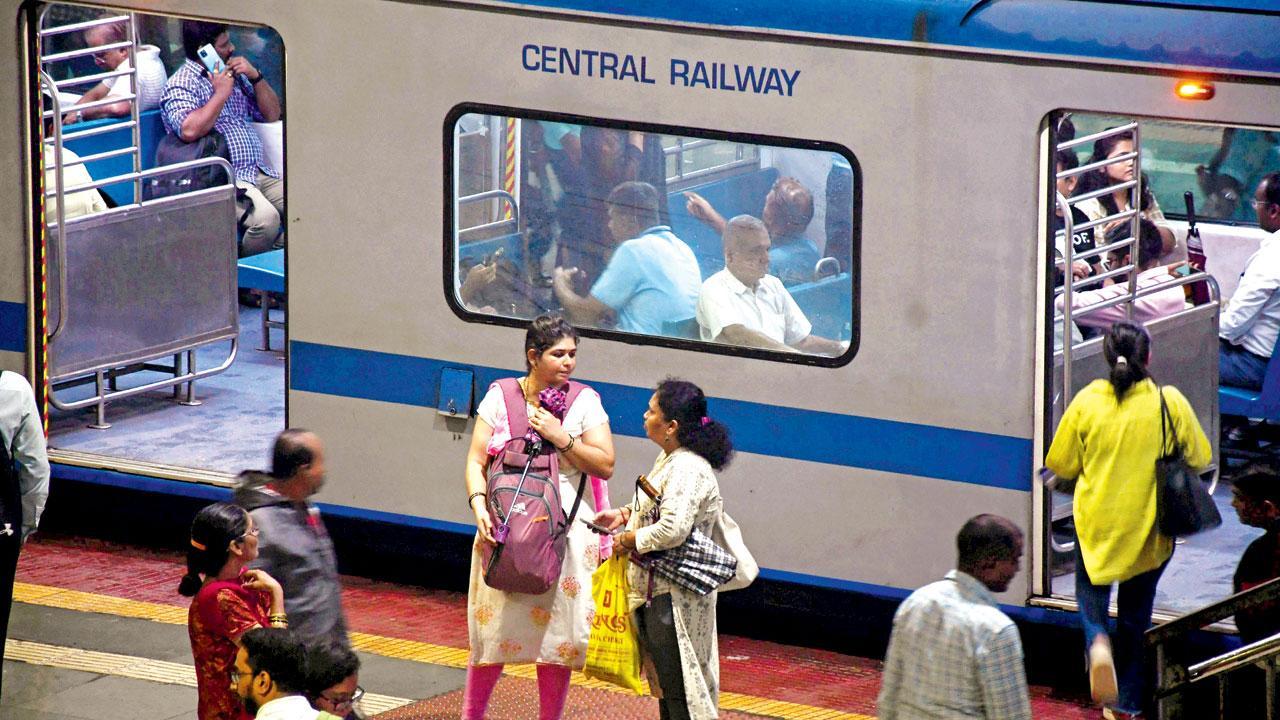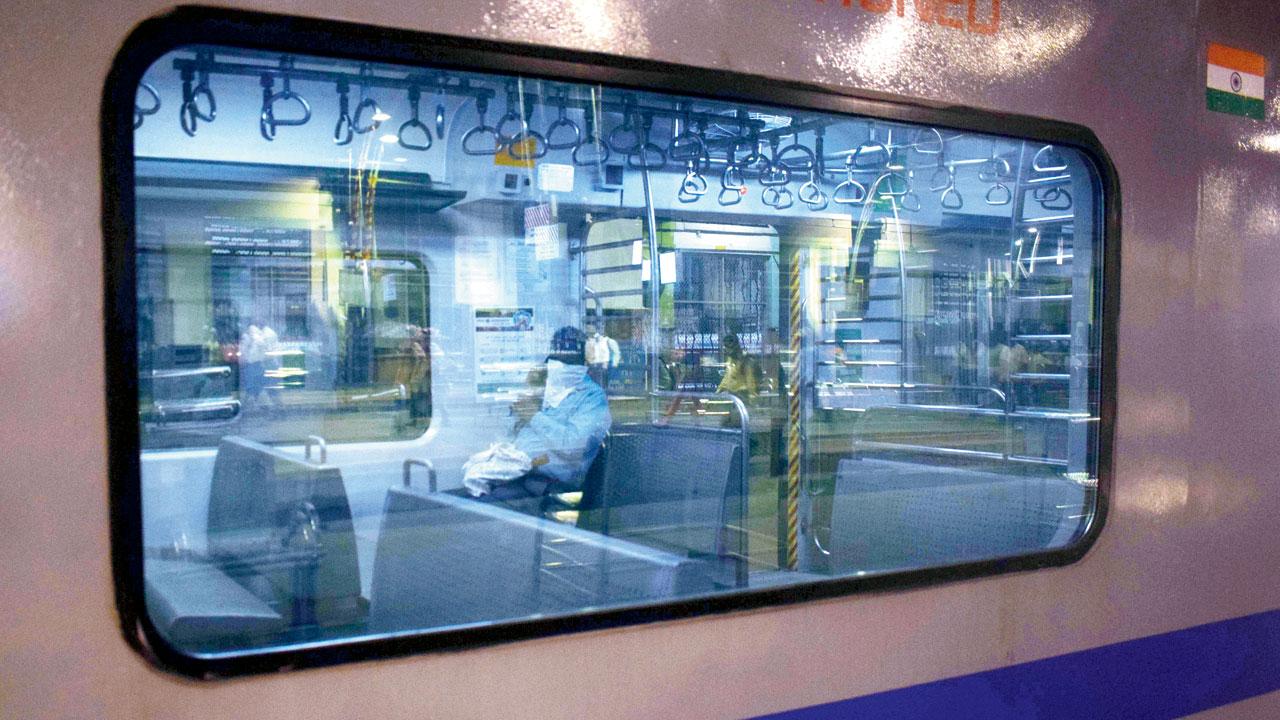Consultant’s first interim report suggests phase-wise introduction of air-conditioned trains, starting with the fast corridor in around 18 months from now and will continue over ten years

Commuters inside an AC train at CSMT. File Pic/Ashish Raje
It’s official. Here’s how to upgrade all Mumbai locals into AC trains! A railway consultant has proposed a phased plan to transition Mumbai’s regular local trains into AC ones. The strategy spans four phases over 18 months to nearly a decade, prioritising fast corridors initially before migrating to slower ones. For Mumbai locals, there’s a long-term plan to upgrade the entire fleet of Mumbai local trains into AC trains. Among these, 238 Mumbai-customised AC local trains—47 under MUTP-3 and 191 under MUTP-3A—are awaiting approvals.
These trains boast inbuilt infotainment, improved CCTV systems, and enhanced acceleration. To navigate this transition with minimal commuter disruption, the Mumbai Rail Vikas Corporation (MRVC) appointed Systra as consultant. An official mentioned, “The objective is to develop an efficient migration strategy from non-AC to AC trains while causing the least inconvenience to commuters.”

Replacing all regular non-AC local trains with AC EMU rakes won’t occur immediately. File pic/Ashish Raje
The consultant recently submitted an interim report outlining the phased induction of AC locals, focusing on effective communication, fare-side debates, and initial fast corridor introductions. Divided into four phases—Preparation, Learning, Build-up, and Accelerated Induction—the plan integrates training, communication, and phased induction.
Four phases
The preparation phase involves scheduling inductions, training operational and maintenance staff, communication, and trial runs. The learning phase initiates new AC train induction, replacing up to 10per cent of existing services. This phase aims to identify issues, rectify initial service hiccups, and instil confidence for the subsequent phases.
The Build-up Phase (10 per cent -50 per cent) gradually introduces new AC trains, replacing non-AC ones, scaling up to 50 per cent of services, divided into sub-phases of 20%, 35%, and 50%. The increased operation will necessitate robust public awareness campaigns and logistical arrangements. Finally, the Accelerated Induction Phase sees over 50 per cent of services running with AC rakes, providing more passenger and staff experience. This phase expedites the induction of additional new trains.
Fast trains first
The recommendation prioritises introducing AC trains with 50 per cent motoring on fast lines due to their extended runtime margins, fewer station stops, reduced door usage, lighter AC load, and lower reliance on ground staff in case of door failures. As fast services constitute approximately 24 per cent of total services, their conversion to AC is slated for the third phase.
18 months to a decade
Replacing all regular non-AC local trains with AC EMU rakes won’t occur immediately. The induction is set to progress over approximately 18 months from the date of manufacturing these trains, extending for almost a decade. Hence, a mixed operation of non-AC and AC trains during this interim period is an essential and unavoidable requirement.
238
No AC local trains awaiting approval
18months to 10 years
Time it will take upgrade all locals into AC trains
 Subscribe today by clicking the link and stay updated with the latest news!" Click here!
Subscribe today by clicking the link and stay updated with the latest news!" Click here!










